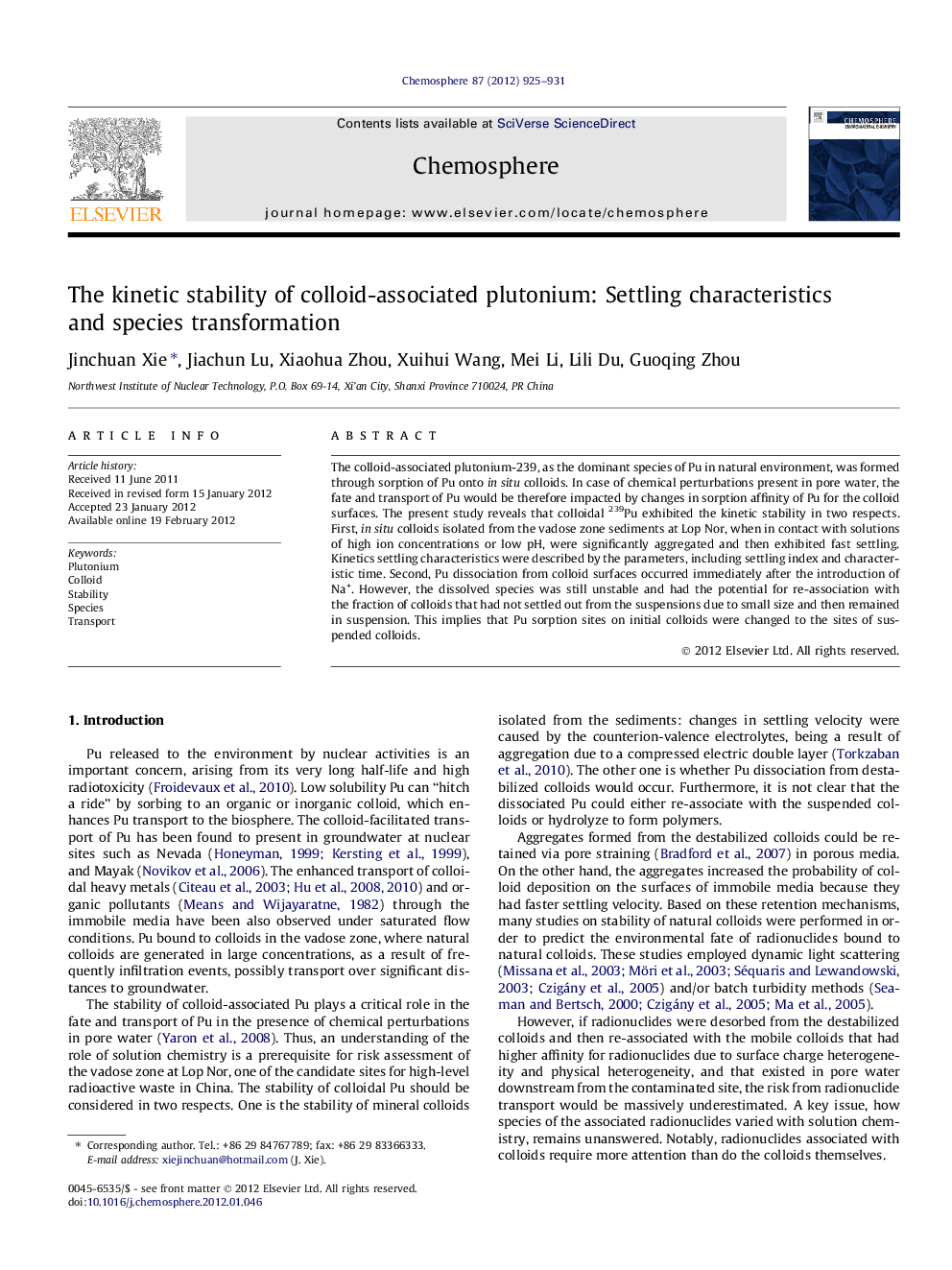| کد مقاله | کد نشریه | سال انتشار | مقاله انگلیسی | نسخه تمام متن |
|---|---|---|---|---|
| 4410380 | 1307541 | 2012 | 7 صفحه PDF | دانلود رایگان |

The colloid-associated plutonium-239, as the dominant species of Pu in natural environment, was formed through sorption of Pu onto in situ colloids. In case of chemical perturbations present in pore water, the fate and transport of Pu would be therefore impacted by changes in sorption affinity of Pu for the colloid surfaces. The present study reveals that colloidal 239Pu exhibited the kinetic stability in two respects. First, in situ colloids isolated from the vadose zone sediments at Lop Nor, when in contact with solutions of high ion concentrations or low pH, were significantly aggregated and then exhibited fast settling. Kinetics settling characteristics were described by the parameters, including settling index and characteristic time. Second, Pu dissociation from colloid surfaces occurred immediately after the introduction of Na+. However, the dissolved species was still unstable and had the potential for re-association with the fraction of colloids that had not settled out from the suspensions due to small size and then remained in suspension. This implies that Pu sorption sites on initial colloids were changed to the sites of suspended colloids.
► The stability of colloid-associated Pu was the first time studied in this paper.
► An approximate third-order settling kinetics of natural colloids was observed.
► Pu desorption from the destabilized colloidal Pu occurred while Na+ was introduced.
► The dissolved Pu was transformed kinetically to pseudo-colloid species.
► Sorption sites of Pu were transferred to the colloids remaining in suspension.
Journal: Chemosphere - Volume 87, Issue 8, May 2012, Pages 925–931